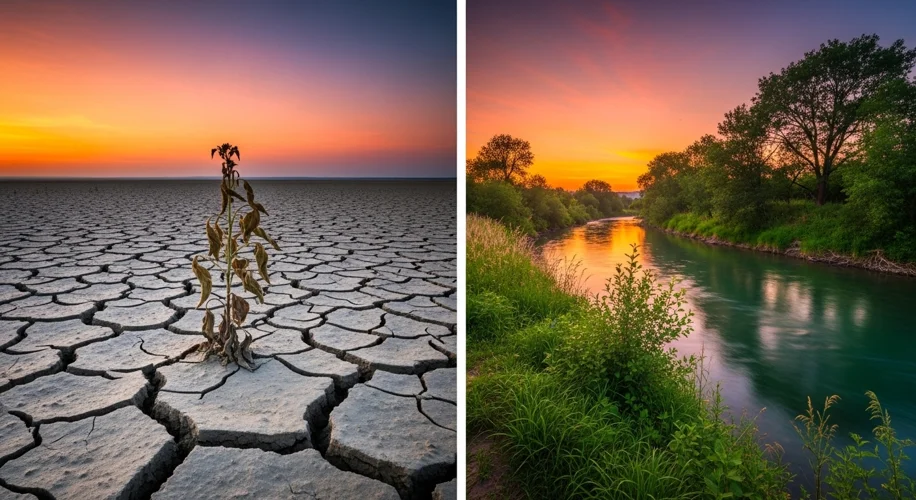As a climate scientist, I spend a lot of time looking at data, at graphs, and at the subtle, often invisible, shifts happening on our planet. But sometimes, the most profound changes are the ones we can see, if we know where to look. Today, I want to talk about something we often take for granted: freshwater. And the reality is, it’s vanishing at an alarming pace.
Think about it – water covers over 70% of our Earth’s surface. But the vast majority of that is saltwater in our oceans. Less than 3% is freshwater, and of that tiny fraction, most is locked up in glaciers and ice caps. That leaves us with a mere sliver of readily accessible freshwater for drinking, agriculture, and supporting ecosystems.
So, what’s causing this precious resource to disappear so quickly? It’s a complex picture, but climate change is a major driver. Rising global temperatures lead to increased evaporation from lakes, rivers, and reservoirs. Warmer weather patterns also alter precipitation, meaning some regions get hit with intense floods while others face prolonged droughts. This isn’t just about less rain; it’s about when and how the rain falls, and how much of it actually replenishes our water sources.
Glaciers, often called the ‘water towers’ of the world, are also melting at an unprecedented rate. For communities that rely on glacier meltwater for their dry seasons, this is a direct threat to their water security. We’re already seeing the impacts in places like the Himalayas and the Andes. When the glaciers are gone, the water source is gone too.
Beyond climate change, human activities play a significant role. Over-extraction for agriculture and industry can deplete groundwater reserves faster than they can be replenished. Pollution also contaminates freshwater sources, rendering them unusable and further shrinking the supply of clean water. Imagine a river choked with pollution – it’s not just an eyesore; it’s a loss of a vital resource.
This isn’t a problem for some distant future; it’s happening now. We’re seeing increased water scarcity in many parts of the world, leading to agricultural losses, economic strain, and even social unrest. The United Nations estimates that by 2025, more than two-thirds of the world’s population could face water shortages. That’s not a prediction; it’s a projection based on current trends.
So, what can we do? As individuals, we can be more mindful of our water consumption. Simple actions like fixing leaky faucets, taking shorter showers, and choosing water-efficient appliances make a difference. Supporting policies that promote sustainable water management and protect our natural water sources is also crucial. On a larger scale, investing in water-efficient technologies, improving irrigation methods in agriculture, and safeguarding our wetlands and forests – which act as natural water filters and regulators – are essential steps.
Understanding the science behind our vanishing freshwater is the first step. The next is acting on that knowledge. Our planet’s health, and our own well-being, depends on it.

